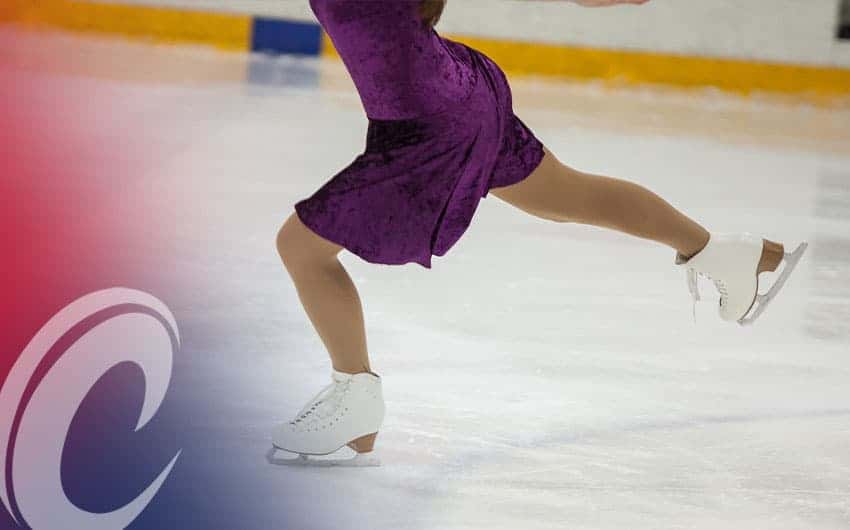The sport of figure skating demands strength, power, balance and stability from the lower body during competition, not to mention the endurance of a four and a half minute long or free skate program. A skaters legs need to be strong enough to perform edgework and sequences, powerful enough to launch in the air during a jump such as an axel or a lutz, and the stability to land those jumps with grace.
So how do we prepare the legs to meet these demands? First we need to look at the sport and what the body does during it. For the most part, figure skating takes place on one leg at a time, so that needs to be addressed in the training. This is not to say that double leg exercises such as the squat and dead lift should never be included the training program, but that single leg strength should be the primary focus. Breaking the program down and addressing the three major aspects during each session will allow for the program to be more successful. Exercises that address overall strength, power and explosiveness and balance and stability should be included 2-4 times per week depending on the time of the season. Below are some examples that can be used to improve your skating ability on the ice.
Strength
One thing to make sure of is that we utilize movements that may be performed on the ice. This includes full range of motion utilizing multiple muscles working together.
- Step Ups: the box height may vary depending on the height of the athlete but generally a twelve inch box works well. The athlete simply keeps one leg on the box and steps up raising his or her body in the air. The keys are to keep the weight on the leg that is on the box with the knee slightly over the toe and chest slightly forward. Raise the body fairly quickly while lowering the body back to the ground slowly. Add weights to increase intensity. The focus will be on the quadriceps and glute muscles.
- Single Leg RDL: the skater starts standing tall and begins to bend at the hip lowering the hands toward the floor while raising one foot into the air at the same rate. The knees and back remain straight as the hip acts as the hinge in a see saw movement. The foot being raised in the air should be pointing down towards the ground during the exercise. Weights can be added in the hands to increase intensity. The focus should be on the glutes and hamstrings. If there is soreness or pain in the lower back, you could be performing the exercise incorrectly.
Power
These exercises, sometimes called plyometrics, can be used to increase jump height which allows more time for the athlete to complete revolutions in the air.
- Single Leg Squat Jump: Standing on one leg, squat about halfway to parallel and jump as high as you can using your arms to create momentum and land on the same leg absorbing the ground while bending at the knee and hip. Attempt to keep the knee beneath the hip during the jump and come to a complete stop when landing. The focus is on the entire lower body jumping with maximal effort.
- 90 Degree Jumps: Begin in a squatted position on two legs (yes this is a two-legged exercise), jump as high as you can rotating 90 degrees. Focus on maximal jump height and a solid stable landing again bending your knees and hips and absorbing the ground. Repeat for four jumps in one direction for a full rotation and repeat in the opposite direction. The focus is on the entire lower body and core for maximal jumping height and stable landing.
Stability and Balance
These exercises are meant to work on maintaining a solid base while the upper body may be moving or simply maintaining balance.
- Single Leg Stance with a Kettlebell Swing: Stand on one leg with a slight bend in the knee and hip. Holding a kettlebell or similar weight in the opposite hand, swing the arm back and for the freely like a pendulum. The swinging of the weight will attempt to throw you off balance. The focus here will be on the hip muscles on the leg you are standing on.
- Depth Jump to One Leg: Stand on a box no higher than twelve inches. Step off the box dropping to the ground and landing on one leg. Absorb the ground by flexing your knee and hip while keeping your knee in alignment with your hip. Come to a complete stop before standing back up. The focus is on a soft eccentric landing.
Chris Phillips is an Athletic Trainer and Strength and Conditioning Specialist with over 25 years in professional sports. Chris is a preferred provider for US Figure Skating’s National Network of Sports Medicine and owner of Compete Sports Performance and Rehab in Orange County, California.

